 Hi Everyone!
Hi Everyone!
We are getting into the rainy season (known as summer in much of the rest of the world) here on St Kilda and that means I get more days in the office and away from the slippery slopes. It’s a good chance to talk a little about what I do as the archipelago archaeologist on the last and outmost double barrel World Heritage Site.
There are three National Trust for Scotland staff on the island during the summer season. The St Kilda Ranger, who manages the NTS facilities and visitor services, the Marine and Seabird Ranger, whose remit is monitoring the famous seabirds of St Kilda, and myself. In a sentence, my role is to ensure the conservation of the cultural heritage of St Kilda in line with the Management Plan agreed between all parties involved in the island. What that translates to is quite a diverse list of tasks which meet current conservation standards and have been thoroughly considered by the NTS and the other legislative, advisory, and governmental institutions involved with the island.
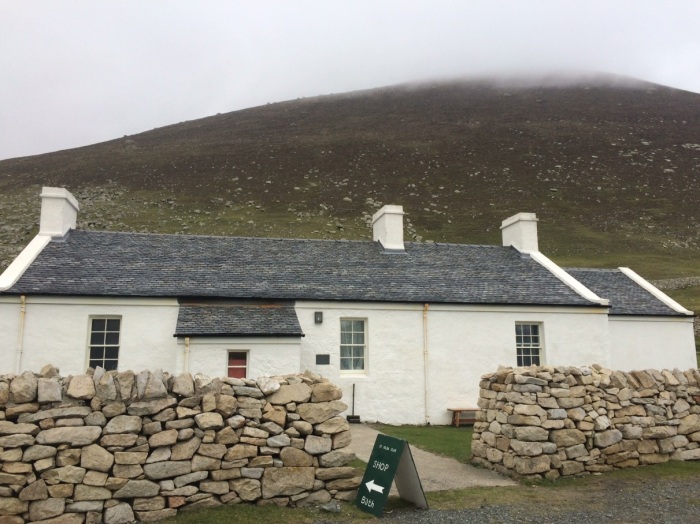
The most important element of the job is to record all changes to the cultural heritage of the archipelago. By keeping an accurate record we gain highly useful data which can be used to assess and mitigate the impact of people and the changing climate upon the built environment and the archaeology. For example, if a Cleit (the famous drystone turf roofed storage structures unique to St Kilda) collapsed during heavy rain, accurate records such as photos and descriptions could allow us to rebuild it stone for stone. These records could also inform us if it had been repaired previously, and if so, what methods were used and by what metric were they successful. They also allow us to monitor change over wide areas which can reveal important patterns when paired with other data, such as impact of high footfall, storm events, or water seepage over time. By regularly inspecting the structures on the island we also have a good idea of the state of the built environment in our care. Before the first NTS archaeologist took up residence in the mid-1990’s our record is fragmented, meaning our conservation decisions are not as well informed as they could otherwise be. Now the data from this regular monitoring work goes into an impressive database which can be consulted readily so we can better understand the impact and effectiveness of our conservation decisions.
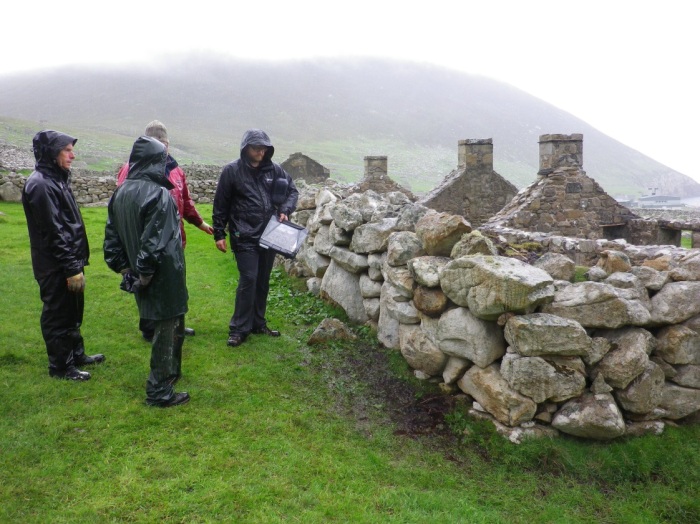
Another important part of the job is to work closely with volunteers and specialist contractors when carrying out repairs to the built environment. Not only am I on hand to record all works, but having a qualified archaeologist present it is one of the conditions Historic Environment Scotland requires when giving the NTS consent to undertake works within the Scheduled areas of St Kilda. It is very important to carry out the archaeologically sensitive tasks using the exact methodology agreed between Historic Environment Scotland and the NTS, as this methodology has been carefully researched and considered against a number of conservation principles. Additionally it is important to be on hand for any discoveries; always expect the unexpected in archaeology!
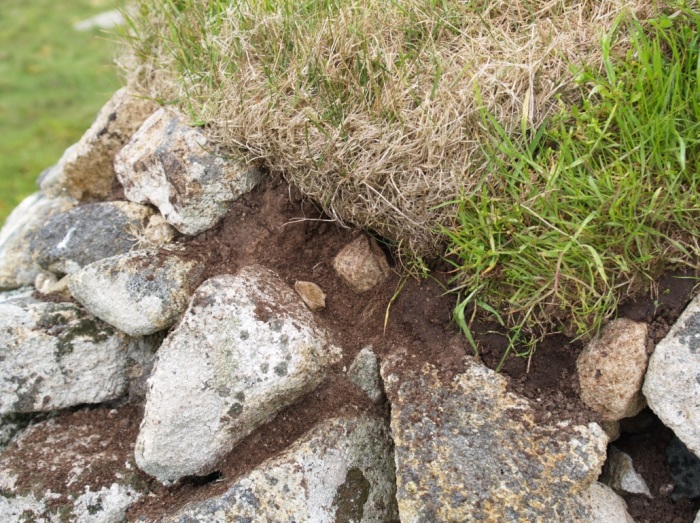
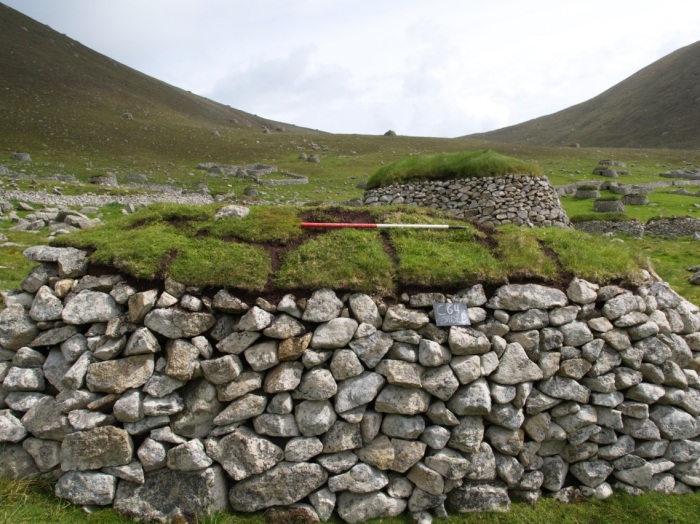
If there are any works needed to be undertaken that fall out with the regular tasks covered in the management agreement, such as digging a new drain to alleviate flooding, running a new cable, or replacing a door, it is my task to argue the case for it by applying for Scheduled Monument Consent. This involves desk based research into the archaeological background of the area and careful consideration of the impact on the natural and cultural environment. Then if consent is granted, I oversee the task to ensure conditions are met and update the record accordingly. Along similar lines, I will occasionally undertake research on structures which have not been looked at in detail before, and write statements of significance for them to better inform our conservation strategies.
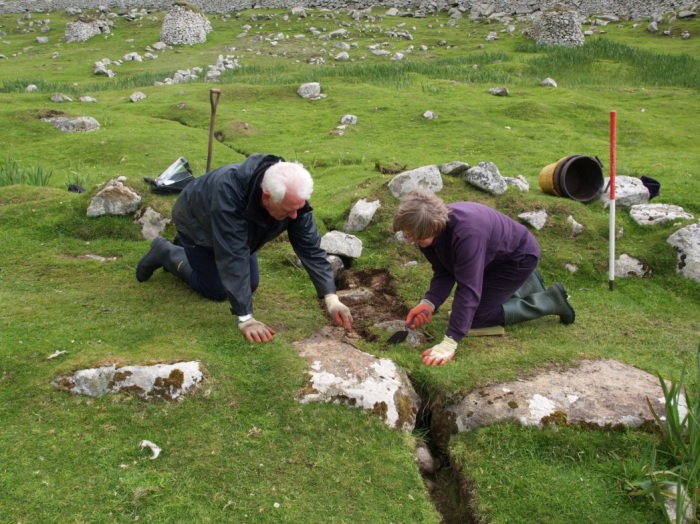
There is another side of my job, largely unrelated to archaeology but no less vital; working with my colleagues to ensure the smooth operation of this remote dual world heritage site. St Kilda truly is the jewel in the NTS crown, with over 6000 visitors a year and growing. Operating the site efficiently requires a close working relationship between the three NTS staff on island as well as the good people at the base. The list of tasks here is vast and dynamic, but I often help out in the shop, greeting visitors coming off of the boats, and keeping the place clean and tidy. Visitors commonly find me pottering about the village peeking into drains and inspecting the drystone masonry, and I really enjoy chatting to them about my role here on island and ongoing conservation efforts. After all, I would not be out here if I didn’t love my job.
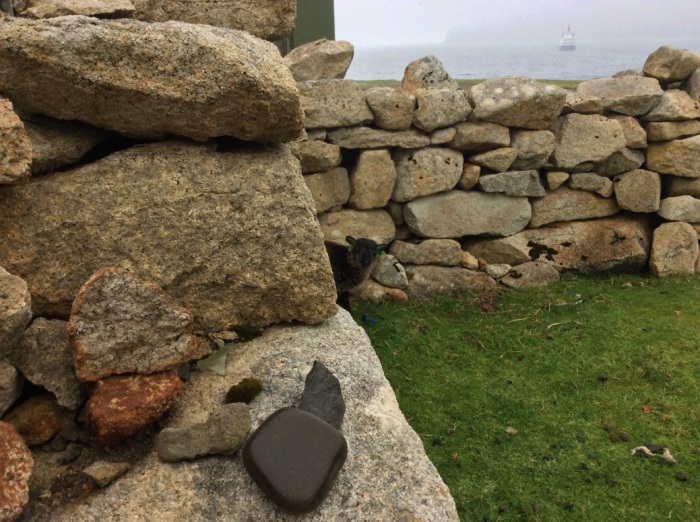
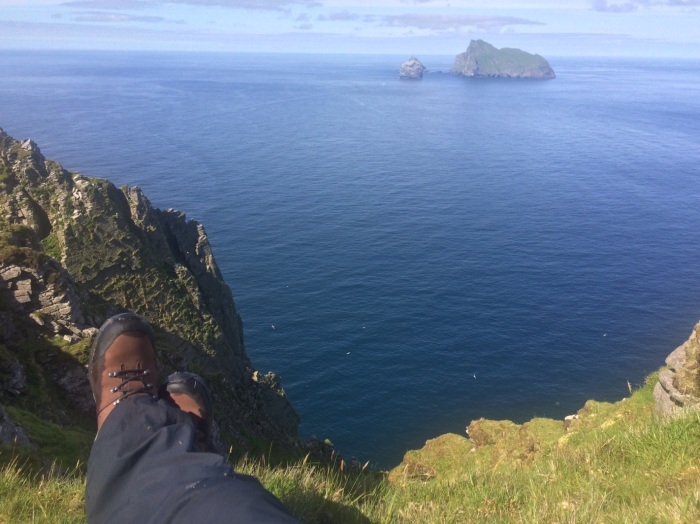
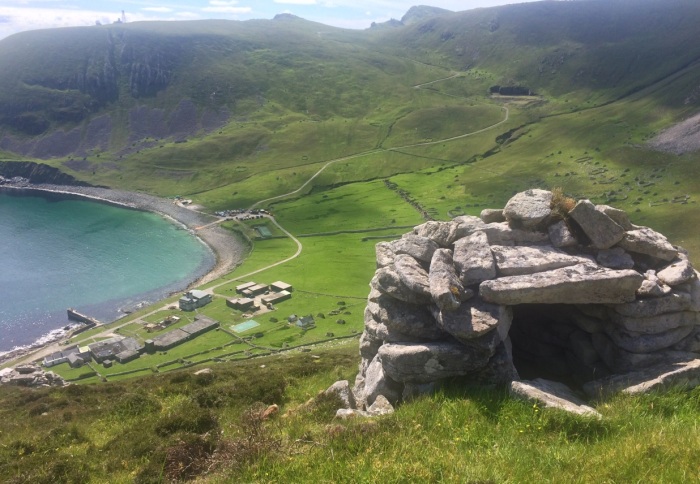
Craig Stanford – NTS ST Kilda Archaeologist – June 2017
Doesn’t sound like you have too bad of a life, there ol’ chap. Take me with you next time you go!
LikeLike